10 Most Common Types of Torque Wrenches: What are the Differences?
-
- Last updated:

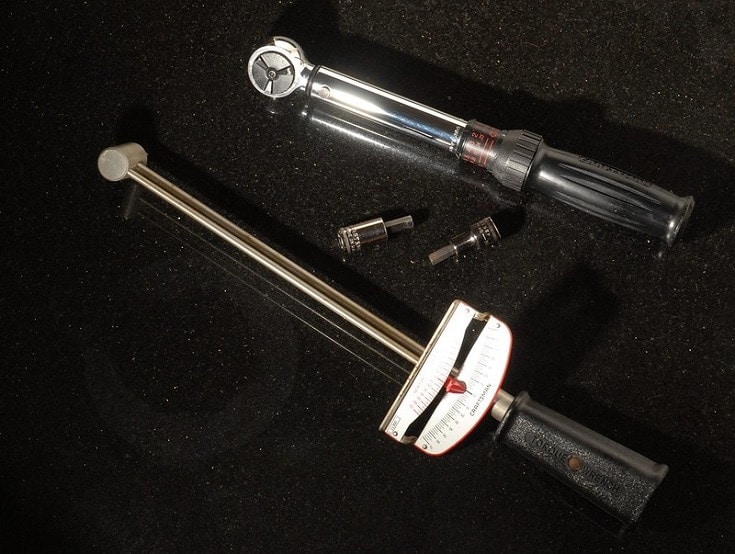
Whether you’re working on a car, bike, or anything else, wrenching down every nut and bolt as tight as you can get them is a recipe for disaster. Many people assume that fasteners need to be as tight as possible. However, this can cause all sorts of problems. Many of these are not designed to be tightened past a certain point. Overtightening them can cause parts to lock up, fail, be out of alignment, get damaged, and more.
So, how are you supposed to know when your bolt or nut is adequately tight? Luckily, there’s a perfect tool for that; a torque wrench. In fact, there are many types of torque wrenches, and each is best suited for particular uses. In this article, we’re going to take a look at the 10 most common types of torque wrenches you’re likely to run into and discuss the differences between them so you know which ones are the best choices for you.

The 10 Most Common Types of Torque Wrenches
1. Click Torque Wrench

If you’ve used a torque wrench before, most likely, it was a click torque wrench. These are the most common torque wrenches, and often, the most affordable as well.
Click style torque wrenches are also incredibly easy to use. Simply turn the handle until you’ve reached the desired torque setting. Then, you use the torque wrench like any standard socket wrench. The difference is, when you apply the appropriate amount of force, the wrench will make an audible click, signifying that the proper torque rating has been reached.
These are accurate tools that find use in a wide range of settings. But you do have to be careful not to overtighten the nut or bolt you’re working with because you can still continue to tighten past the click.
2. Electronic Torque Wrench
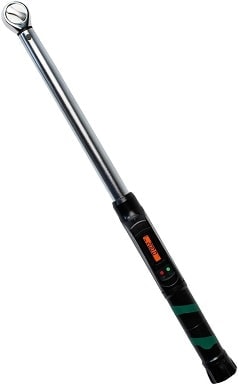
Electronic torque wrenches represent a big step up from standard click-type torque wrenches. Of course, they’re also far more expensive, which often prices them out of many hobbyists’ toolboxes. But you’ll often find them in professional settings due to their ease of use, accuracy, and speed.
With an electronic torque wrench, you’ll have a small digital screen so you can set your desired torque rating. These wrenches are pre-calibrated, so if you need to use one, you won’t have to worry about re-calibrating it.
One major advantage you’ll get with many electronic torque wrenches is the ability to set multiple torque settings that you can easily and quickly switch between with the push of a button. This could save you tons of time when dealing with several fasteners that need to be torqued to different levels. Many of these wrenches can also maintain a setting across many uses, even if you turn the wrench off. This means you won’t have to set your desired torque level when you return to your project.
When you reach the desired torque setting with an electronic torque wrench, you could get one or several notifications. They’ll often emit a buzz or a beep to alert you, but you might also feel a vibration or see a small light illuminate. Some wrenches do all of the above!
3. Programmable Electronic Torque Wrench
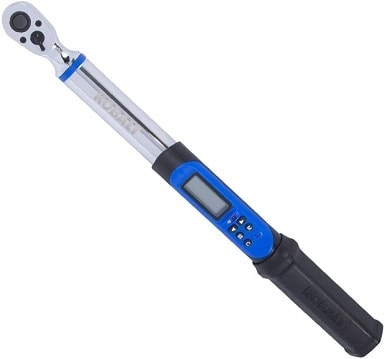
Programmable electronic torque wrenches are very similar to electronic torque wrenches, but they take things a step further. They feature digital readouts, making it simple to set your desired torque rating, but they can do more than just stop at a particular torque setting.
These torque wrenches have a gyroscope integrated into the design that allows them to measure angles. The advantage of this is that previously tightened nuts and bolts can be recognized. They can also show a given fastener’s yield point.
4. Mechatronic Torque Wrench

Mechatronic torque wrenches are a combination of a click-style torque wrench and an electronic one. You get the ease of use provided by a click-style torque wrench since they follow the same mechanics. But you won’t just get a click when you reach the desired torque rating. Instead, this electronic torque wrench will provide extra feedback and prevent overtightening, offering far better accuracy than a standard click-style torque wrench.
5. Slipper Torque Wrench
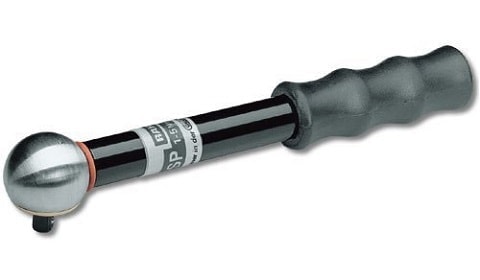
Slipper torque wrenches are entirely mechanical, but because of the way they’re designed, they offer superior accuracy over a click torque wrench by ensuring that you can’t overtighten any fastener.
These torque wrenches are generally styled like a socket wrench, but they have a ball and cam system inside the head. Once the appropriate torque level has been achieved, the cam locks into place. If you continue to apply pressure, the cam will slip. This prevents it from continuing to tighten, which is the major advantage of a slipper torque wrench.
6. Beam Torque Wrench
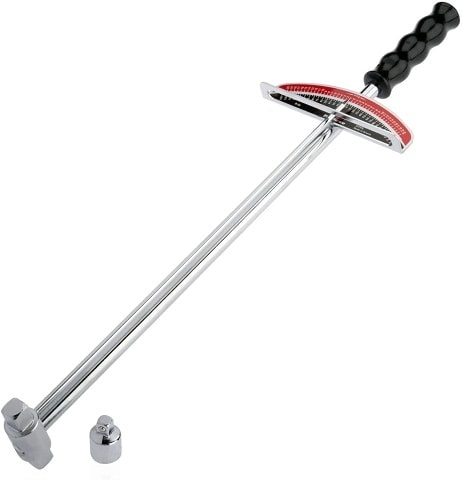
Beam torque wrenches are about as basic as torque wrenches get. They feature two beams and a small gauge––one of which moves and acts as a needle on the dial. When you apply pressure, the beam moving across the dial indicates how much force you’re applying.
Naturally, these are some of the least accurate torque wrenches. They are also the least expensive, which is what makes them appealing to many users. Unlike most torque wrenches, a beam torque wrench won’t stop or even give you an audible sound when you reach your desired torque setting. After all, you can’t even set it to a specific torque level.
Instead, you’ll need to watch the gauge to see where the beam is pointing. When it points to your desired torque rating, you simply stop applying pressure. There’s a lot of room for error here, though, so beam torque wrenches aren’t the best choice when accuracy is of utmost importance.
7. Split Beam Torque Wrench
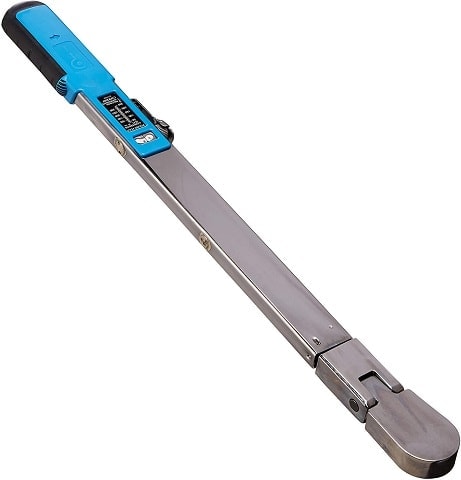
A split beam torque wrench is a type of beam torque wrench that’s much more accurate and user friendly. Unlike a standard beam torque wrench, you can actually set your desired torque rating on the wrench, and it will stop tightening when you reach it. You can set the desired torque rating by opening the hinge.
While beam torque wrenches are quite affordable, split beam torque wrenches tend to be pretty pricey. This is mainly because of their high degree of accuracy. Unlike some other types of torque wrenches, split beam torque wrenches prevent overtightening. Once you reach the desired torque level, the wrench will not allow you to apply more pressure, making them a great choice when it’s vital to prevent overtightening.
8. Dual-Signal Deflecting Beam Torque Wrench
This type of torque wrench utilizes deflecting beams instead of the coil springs you’ll find in standard click-type torque wrenches. Because of this, they tend to outlast other types of torque wrenches. They provide several levels of feedback with an audible noise and an indicator pin that you can see. Many people believe that deflecting beam torque wrenches offer more consistent readings than other similar tools.
9. Hydraulic Torque Wrench
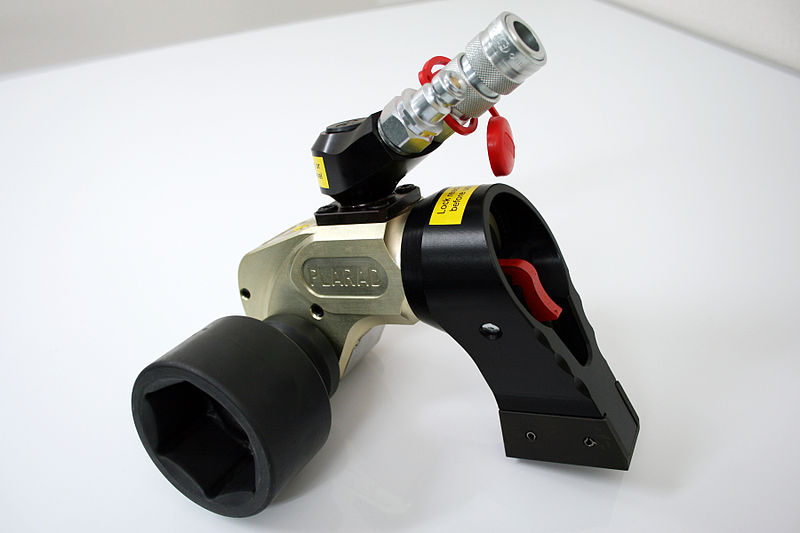
Hydraulic torque wrenches are heavy-duty apparatuses that are intended for working with industrial-sized fasteners. The biggest nuts and bolts require the most torque, and hydraulic torque wrenches are the tools to use in such situations. In fact, you’ll likely have to visit an industrial supplier to pick one up.
On top of being incredibly powerful, hydraulic torque wrenches are also extremely accurate. Surprisingly, these are pretty lightweight devices. They’re also very quiet. You can use one directly on a nut or bolt, or you can use an impact socket in the hydraulic torque wrench.
10. No-Hub Torque Wrench

You’ll notice that no-hub torque wrenches look quite different from most of the other torque wrenches we’ve covered. While most of these tools see lots of use in the automotive industry and other similar places, no-hub torque wrenches are used most often by plumbers and pipefitters.
These wrenches are designed to work on pipes and couplings. They’re T-shaped, so they can easily fit in tight spaces. Plus, they’re light and easy for a plumber to carry around in a tool belt. They’re also extremely accurate since having a pipe connector too tight or loose could spell disaster.

Conclusion
A torque wrench is a vital tool for many jobs and there are many different types of torque wrenches out there. Overtightening a fastener can lead to a world of troubles. Similarly, leaving a fastener too loose can cause it to fall off in a vital moment, cause damage, or one of many other undesirable outcomes. Luckily, it’s easy to prevent either of these scenarios with a simple torque wrench. As you can see, there are many to choose from. So, figure out which one will best fit your needs, and you’ll never have to worry about having a fastener too tight or loose again.
See Also:
Featured Image Credit: stockphoto-graf, Shutterstock
Contents

